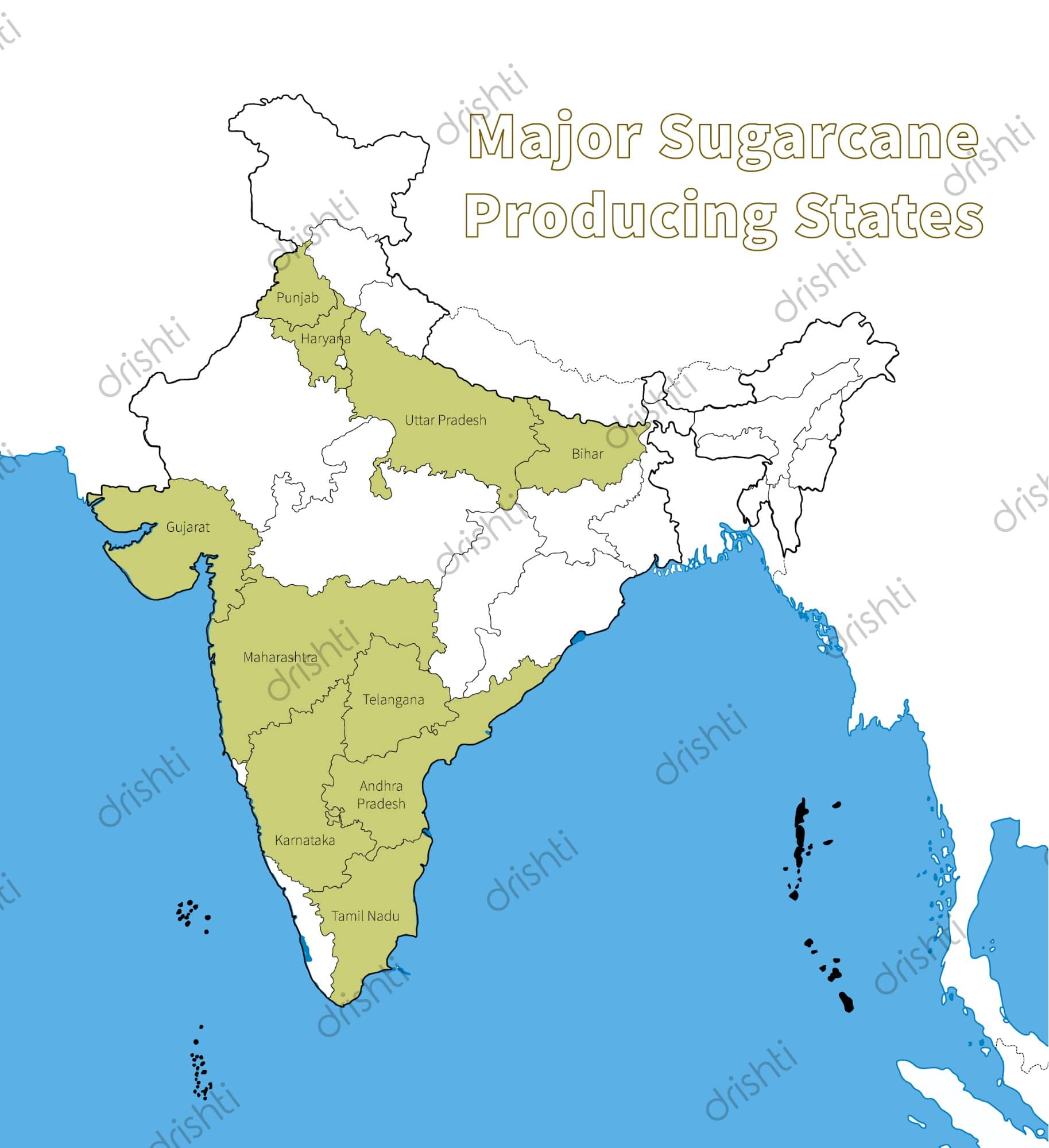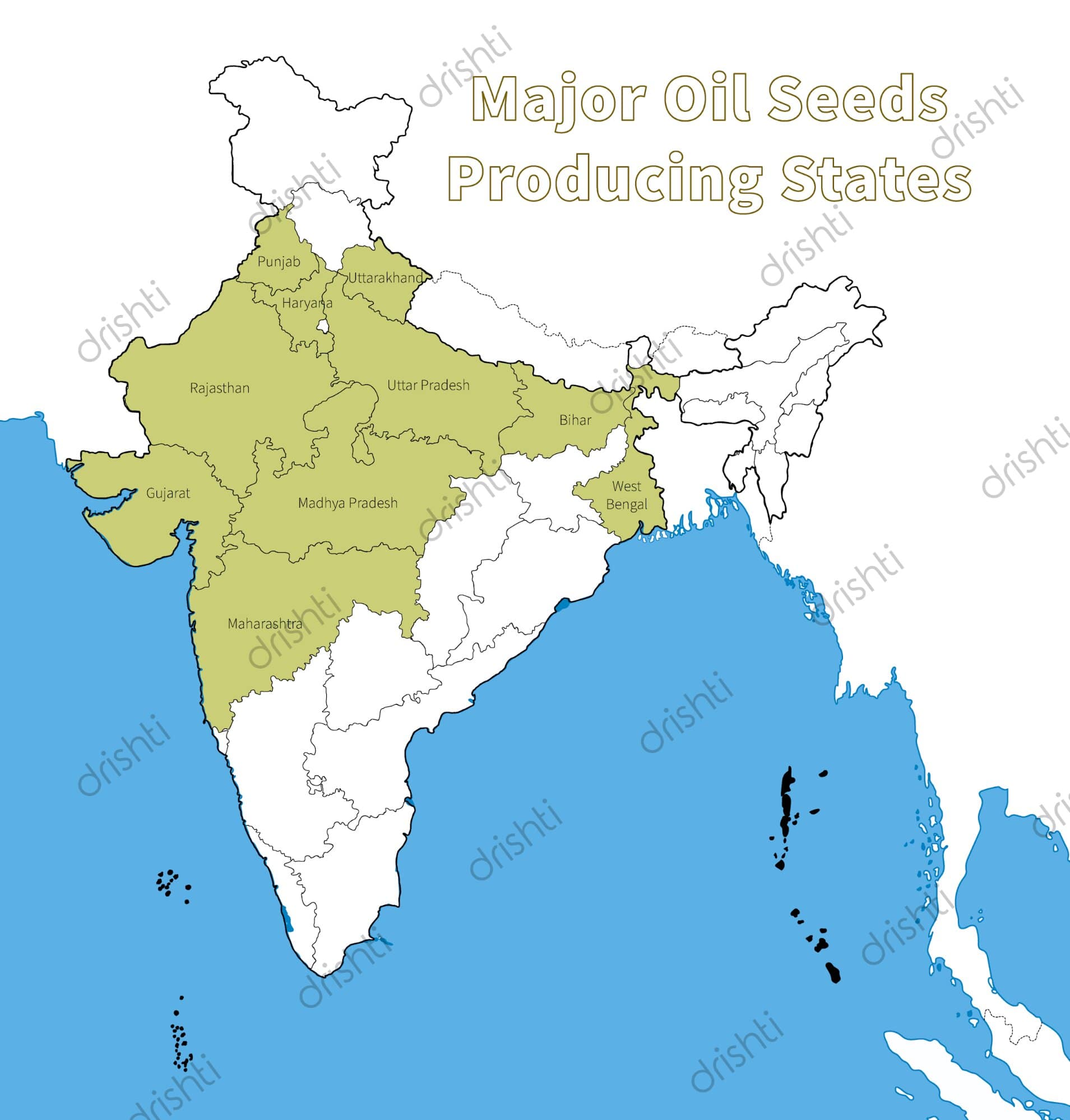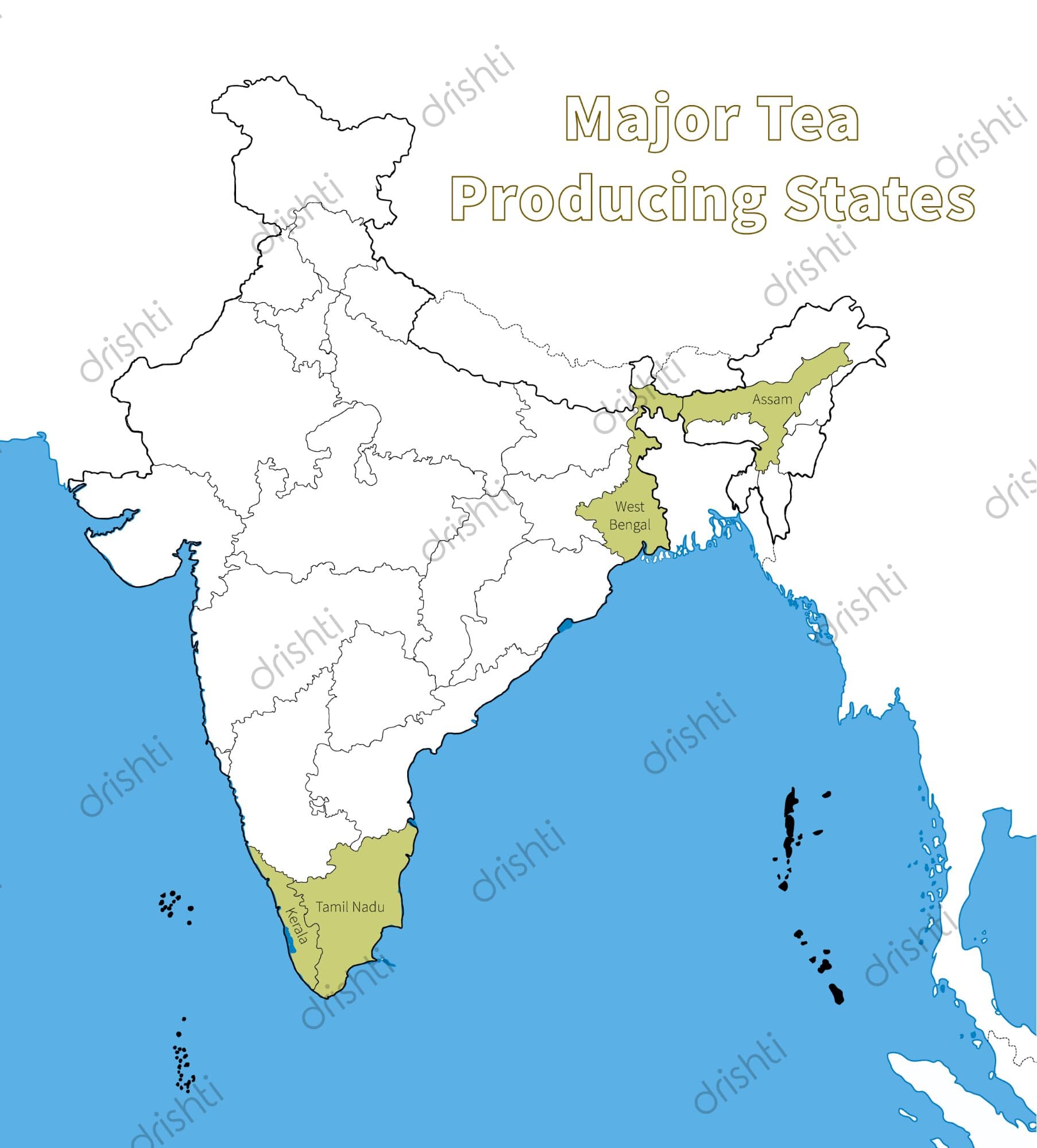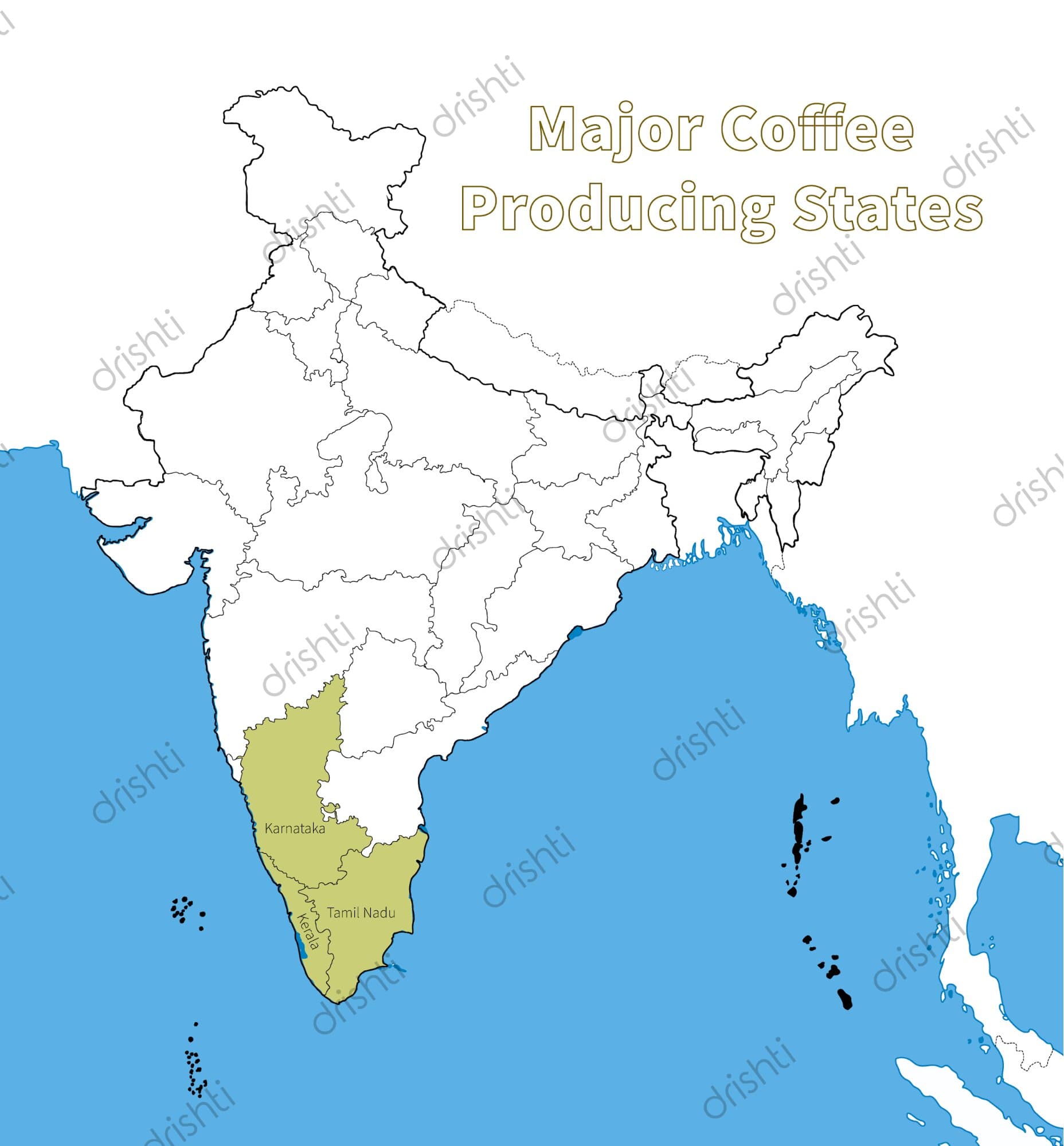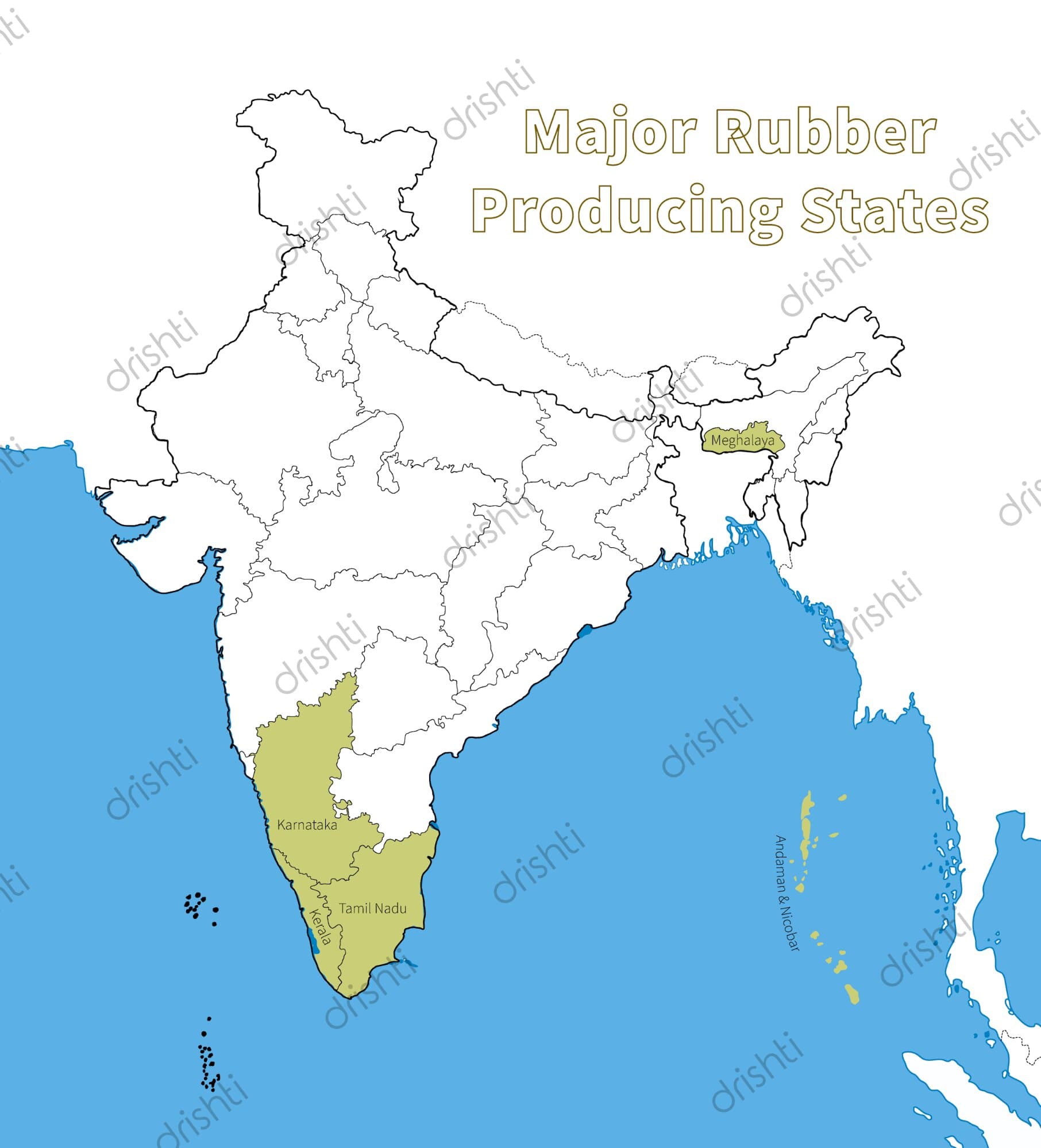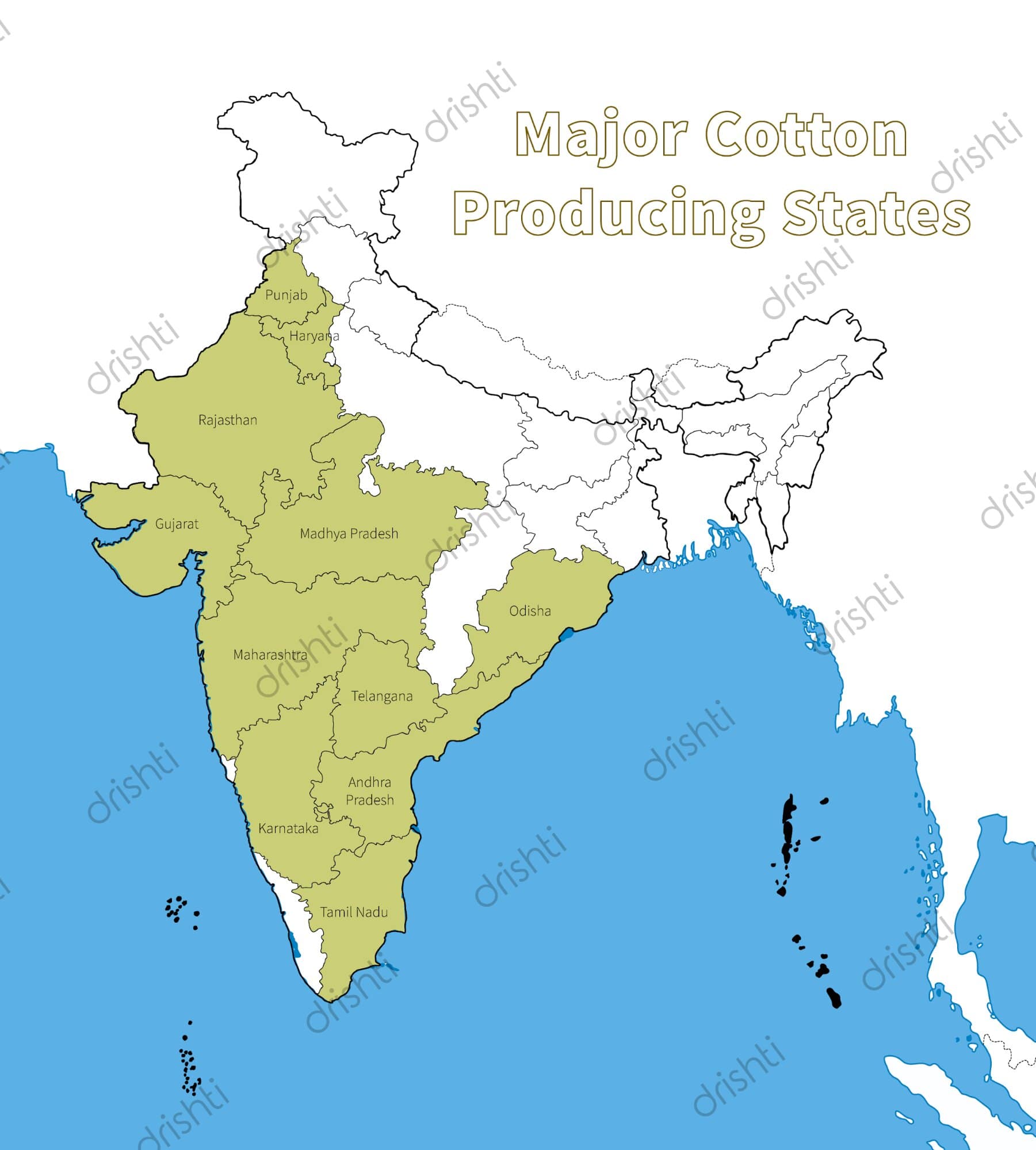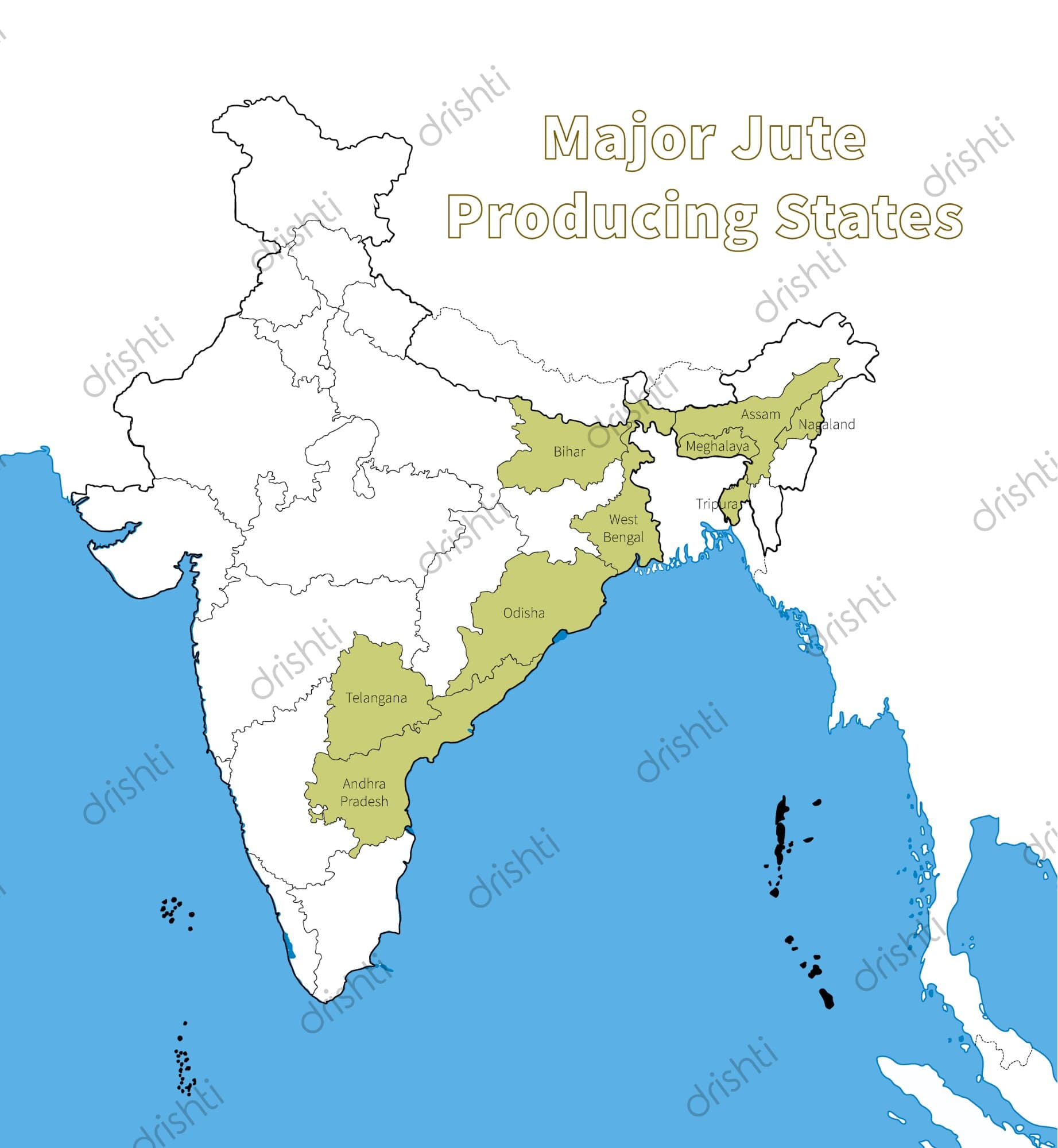Cropping Patterns and Major Crops of India: Part Two | 04 Nov 2019
Major Cash Crops
Sugarcane
- Temperature: Between 21-27°C with hot and humid climate.
- Rainfall: Around 75-100 cm.
- Soil Type: Deep rich loamy soil.
- Top Sugarcane Producing States: Uttar Pradesh > Maharashtra > Karnataka > Tamil Nadu > Bihar.
- India is the second largest producer of sugarcane after Brazil.
- It can be grown on all variety of soils ranging from sandy loam to clay loam given these soils should be well drained.
- It needs manual labour from sowing to harvesting.
- It is the main source of sugar, gur (jaggery), khandsari and molasses.
- Scheme for Extending Financial Assistance to Sugar Undertakings (SEFASU) and National Policy on Biofuels are two of the government initiatives to support sugarcane production and sugar industry.
Oil Seeds
- Temperature: Between 15-30°C
- Rainfall: Around 30-75 cm.
- Soil Type: Loam to clayey loam and well drained sandy loams.
- Top Oilseeds Producing States: Madhya Pradesh > Rajasthan > Gujarat > Maharashtra > Uttar Pradesh.
- Main oil-seeds produced in India are groundnut, mustard, coconut, sesamum (til), soyabean, castor seeds, cotton seeds, linseed and sunflower.
- Most of these are edible and used as cooking mediums. However, some of these are also used as a raw material in the production of soap, cosmetics and ointments.
- Yellow Revolution and Integrated Scheme on Oilseeds, Pulses, Oil Palm and Maize (ISOPOM) are examples of government initiatives for oilseeds.
- Groundnut is a kharif crop and accounts for about half of the major oilseeds produced in the country.
- Linseed and mustard are rabi crops.
- Sesamum is a kharif crop in north and rabi crop in south India.
- Castor seed is grown both as rabi and kharif crop.
- Horticulture Crops
- Horticulture is the branch of agriculture concerned with cultivation, production and sale of fruits, vegetables, flowers, herbs, ornamental or exotic plants.
| Fruits | States |
| Mangoes | Maharashtra, Andhra Pradesh, Telangana, Uttar Pradesh and West Bengal |
|
Oranges |
Nagpur and Cherrapunjee (Meghalaya) |
| Bananas | Kerala, Mizoram, Maharashtra and Tamil Nadu |
| Litchi and Guava | Uttar Pradesh and Bihar |
|
Pineapples |
Meghalaya |
|
Grapes |
Andhra Pradesh, Telangana and Maharashtra |
|
Apples, Pears, Apricots and Walnuts |
Jammu and Kashmir and Himachal Pradesh |
- India is the second largest producer of fruits and vegetables and it produces both tropical and temperate fruits.
- India produces about 13 percent of the world’s vegetables. It is an important producer of peas, cauliflower, onions, cabbage, tomato, brinjal and potato.
- Golden Revolution, Mission for Integrated Development of Horticulture (MIDH) and Coordinated Horticulture Assessment and Management using geo-informatics (Project CHAMAN) are government initiatives to help horticulture sector.
Plantation Crops
Tea
- Temperature: Between 20-30°C
- Rainfall: Around 150-300 cm.
- Soil Type: Deep and fertile well-drained soil, rich in humus and organic matter.
- Top Tea Producing States: Assam > West Bengal > Tamil Nadu.
- India is the second largest producer of tea.
- It was introduced in the eastern hill slopes of India by the British.
- Slopes of eastern hills have humid climate and evenly distributed rainfall without water logging which are optimal conditions for terrace farming of tea.
- Tea is a labour intensive industry. It requires abundant, cheap and skilled labour. Tea is processed within the tea garden to retain its freshness.
- Tea Development and Promotion Scheme, Wage Compensation Scheme and Tea Boutiques are few of the government schemes for tea.
Coffee
- Temperature: Between 15-28°C
- Rainfall: Around 150-250 cm.
- Soil Type: Well drained, deep friable loamy soil.
- Top Coffee Producing States: Karnataka > Kerala > Tamil Nadu.
- India is the seventh largest producer.
- Coffee was initially brought from Yemen and introduced on the Baba Budan Hills.
- Hills with well-defined shade canopy, comprising evergreen leguminous trees provide the optimal condition for coffee cultivation that is why it is mainly concentrated in the hilly regions.
- Indian variety of coffee ‘Arabica’ is famous worldwide.
- Various Integrated Coffee Development Projects and schemes have been launched by the government to support coffee production.
Rubber
- Temperature: Above 25°C with moist and humid climate.
- Rainfall: More than 200 cm.
- Soil Type: Rich well drained alluvial soil.
- Top Rubber Producing States: Kerala > Tamil Nadu > Karnataka.
- It is an equatorial crop, but under special conditions, it is also grown in tropical and sub-tropical areas.
- Rubber is an important industrial raw material.
- Rubber Plantation Development Scheme and Rubber Group Planting Scheme are examples of government led initiatives for rubber.
Fibre Crops
Cotton
- Temperature: Between 21-30°C
- Rainfall: Around 50-100cm.
- Soil Type: Well drained black cotton soil of Deccan Plateau.
- Top Cotton Producing States: Gujarat > Maharashtra > Telangana > Andhra Pradesh > Rajasthan.
- India is believed to be the original home of the cotton plant. Cotton is one of the main raw materials for cotton textile industry.
- Cotton needs 210 frost-free days and bright sun-shine for its growth.
- It is a kharif crop and requires 6 to 8 months to mature.
- Silver Fibre Revolution and Technology Mission on Cotton are the government initiatives for increasing cotton production in India.
- Cotton has been genetically modified into BT Cotton to fight environmental stress and pest attacks.
Jute
- Temperature: Between 25-35°C
- Rainfall: Around 150-250 cm
- Soil Type: Well drained alluvial soil
- Top Jute Producing States: West Bengal > Bihar > Assam > Andhra Pradesh > Odisha.
- It is mainly concentrated in eastern India because of the rich alluvial soil of Ganga-Brahmaputra delta.
- India is the largest producer of jute.
- It is known as the golden fibre.
- It is used in making gunny bags, mats, ropes, yarn, carpets and other artefacts.
- Due to its high cost, it is losing market to synthetic fibres and packing materials, particularly nylon.
- Golden Fibre Revolution and Technology Mission on Jute and Mesta are two of the government initiatives to boost jute production in India.
Changing Cropping Patterns of India
- Cropping pattern is a dynamic concept because it changes over space and time. It can be defined as the proportion of area under various crops at a point of time. Sometimes a number of crops are cultivated in combinations and rotations over a period.
- In India, the cropping pattern is determined by rainfall, climate, temperature, soil type, technology and socio-economic conditions of the farmers.
- These changes in the cropping pattern mainly occurred due to increase in the prices of crops. After independence a lot of changes had been recorded in the cropping pattern in India.
- Green Revolution also led to changes in the cropping patterns. Rice was introduced to Punjab, Haryana and Uttar Pradesh.
- Cultivation of food crops has become very remunerative and productive due to the introduction of new technologies in Indian agriculture.
- Farmers are more intensively moving towards cultivation of cash/commercial crops such as oilseeds, fruits, vegetables, spices, etc. from the traditional non-cash/non-commercial crops such as cereals and pulses.
- Farmers have changed their crop patterns in order to reap the benefits of economic expansion as well.
- Climate change has affected the Indian monsoon due to which cropping patterns are also changing.
- Population explosion and urbanisation has led to land conversion, boosting intensive farming and has brought changes in cropping patterns.
- At the beginning of the present century, nearly 83 percent of the total cultivable land of India was put under food crops and the remaining 17 percent was put under non-food crops. But in 1944-45, there was a change in the cropping pattern in India and area under food crops came down to 80 percent and the area under non-food crops slightly increased to 20 percent.
- Among all the food crops, the largest increase in area since 1950- 51 has already been recorded by wheat cultivation which shows an increase of 132 percent by 1987-88. But in the case of both rice and pulses, the increase in area has been restricted to only 23 percent; Coarse cereals have recorded only marginal increase of 11 percent by 1987-88.

